 Ed Halter
Ed Halter
Director Denis Villeneuve’s sequel is its own kind of replicant.
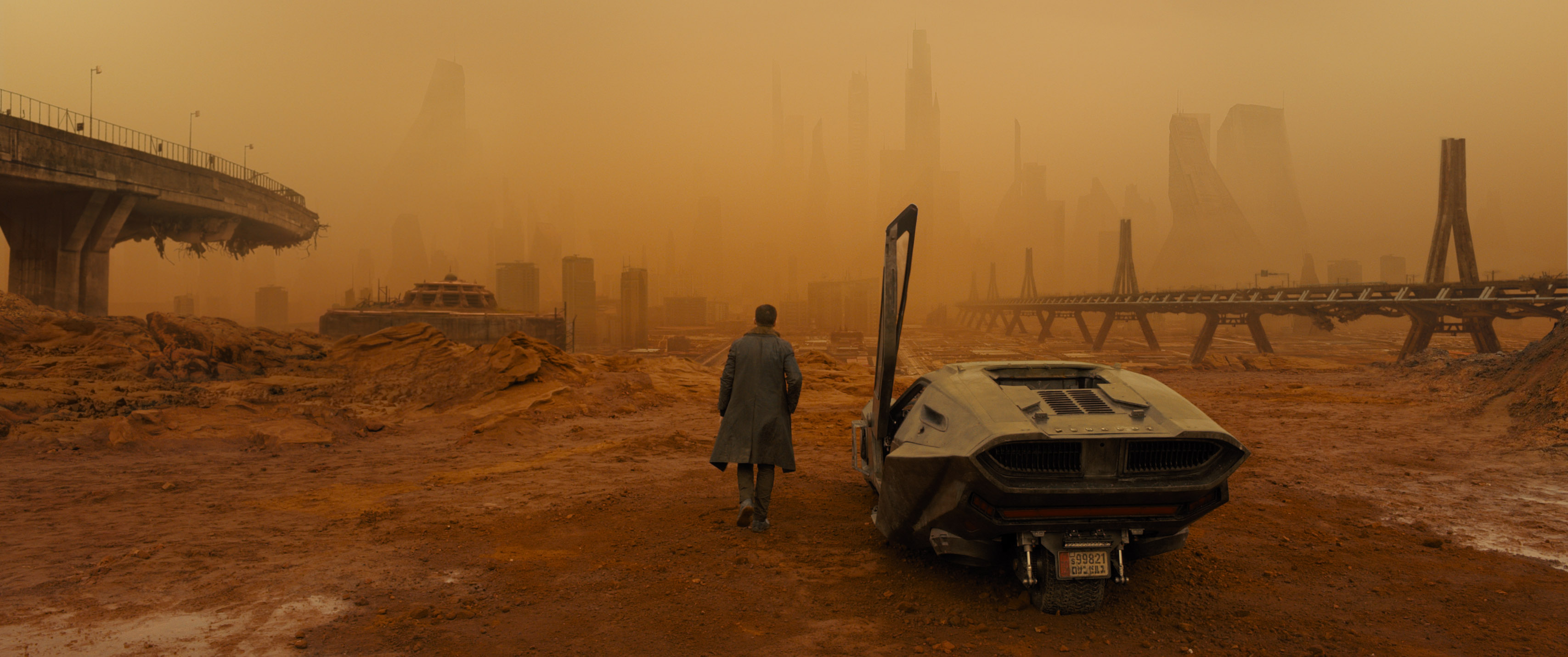
Ryan Gosling as K in Blade Runner 2049. Image courtesy Alcon Entertainment.
Blade Runner 2049, directed by Denis Villeneuve
• • •
Even before the first image of Denis Villeneuve’s Blade Runner 2049 appears on screen, our ears tell us this sequel will pay a careful homage to Ridley Scott’s 1982 film: as the initial production credits appear, the soundtrack kicks off with the same soft, booming explosions that play at the start of the original, followed by a precisely edited variation of Scott’s famous beginning sequence. White-on-black text, mimicking the design of the earlier film’s opening crawl, explains the new premise—three decades after the events of Blade Runner, the Wallace Corporation has revived the production of replicants, the “more human than human” androids introduced in the first film, and the cops known as blade runners are still hard at work hunting down the remaining, older models of rogue replicants. An eye blinks in extreme close-up; the infernally dense cityscape of a future Los Angeles sweeps beneath the flight path of a scrappy police hovercar; the soundtrack surges with melancholy synths. Hewing closely to its predecessor, the sequence operates as a beautifully orchestrated rendition of its source material, a pious offering of high-class fanservice.
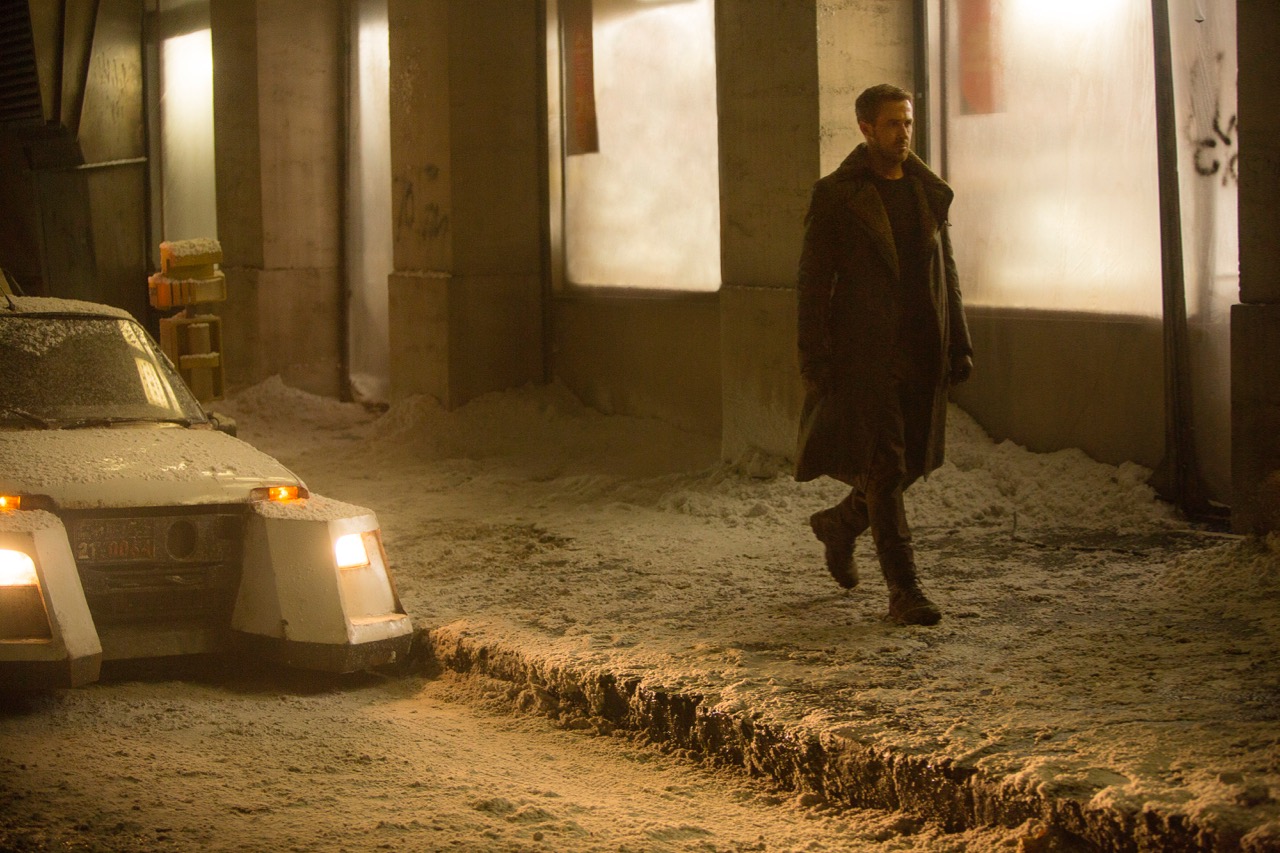
Ryan Gosling as K in Blade Runner 2049. Image courtesy Alcon Entertainment.
This exacting pastiche sets the tone for Villeneuve’s film as a whole. For while it is technically a sequel, taking place in the same world as Scott’s film and extending the narrative to thirty years later, Blade Runner 2049 at the same time wants to provide a sumptuously studied remake of Blade Runner, copying countless elements from it in order to evoke rich sense-memories of the original film. These range from cinematographer Roger Deakins’s overt restaging of many iconic shots from the first film, to Dennis Gassner’s production design that meticulously matches its grimy neon-noir urban dystopia, to the dashing trench coat worn by this movie’s young robot-hunter, K (Ryan Gosling). And as in Blade Runner, Villeneuve’s movie builds its world as much sonically as visually, plunging the audience into a cacophony of electronic klaxons, polyglot crowd-chatter, and invasive talking advertisements, accompanied by Hans Zimmer and Benjamin Wallfisch’s score, which tastefully incorporates key phrases from Vangelis’s masterful electro–prog rock soundtrack from 1982.
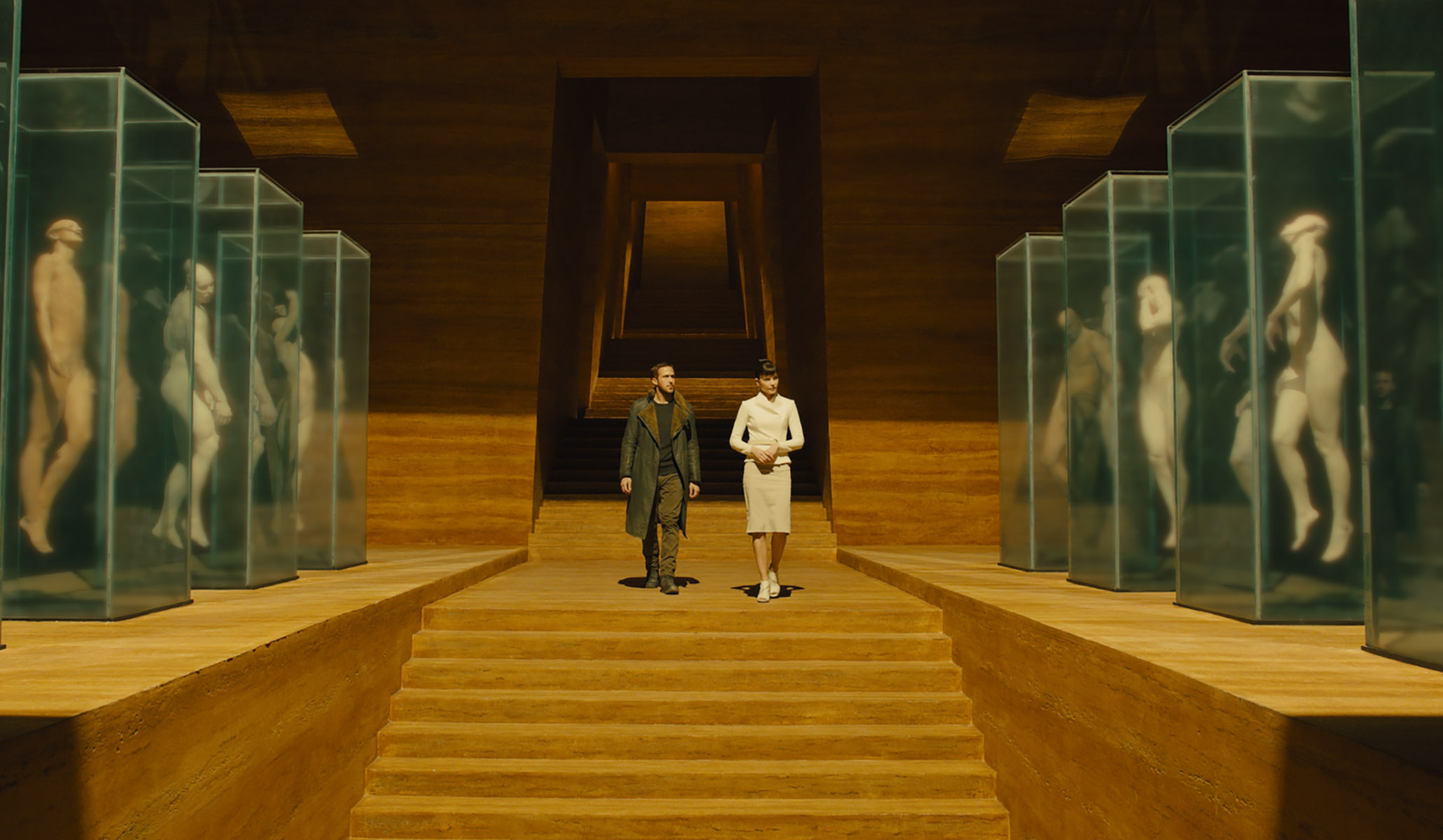
Ryan Gosling as K and Sylvia Hoeks as Luv in Blade Runner 2049. Image courtesy Alcon Entertainment.
Many characters, too, seem to be mere reincarnations of favorite personages from the original. The Wallace Corporation functions just like the earlier film’s Tyrell Corporation with another name: the headquarters of both companies are constructed like echoing Egyptian tombs; the sightless, marble-eyed Niander Wallace (Jared Leto) intones his devilish plans with the same reptilian cadence and propensity for literary metaphor that actor Joe Turkel provided for Blade Runner’s thickly bespectacled villain, Dr. Eldon Tyrell; and as with Dr. Tyrell, Wallace’s assistant too is a sexy replicant, Luv (Sylvia Hoeks), who borrows from Scott’s film both Sean Young’s classic bombshell looks and Daryl Hannah’s bone-crunching martial arts prowess.
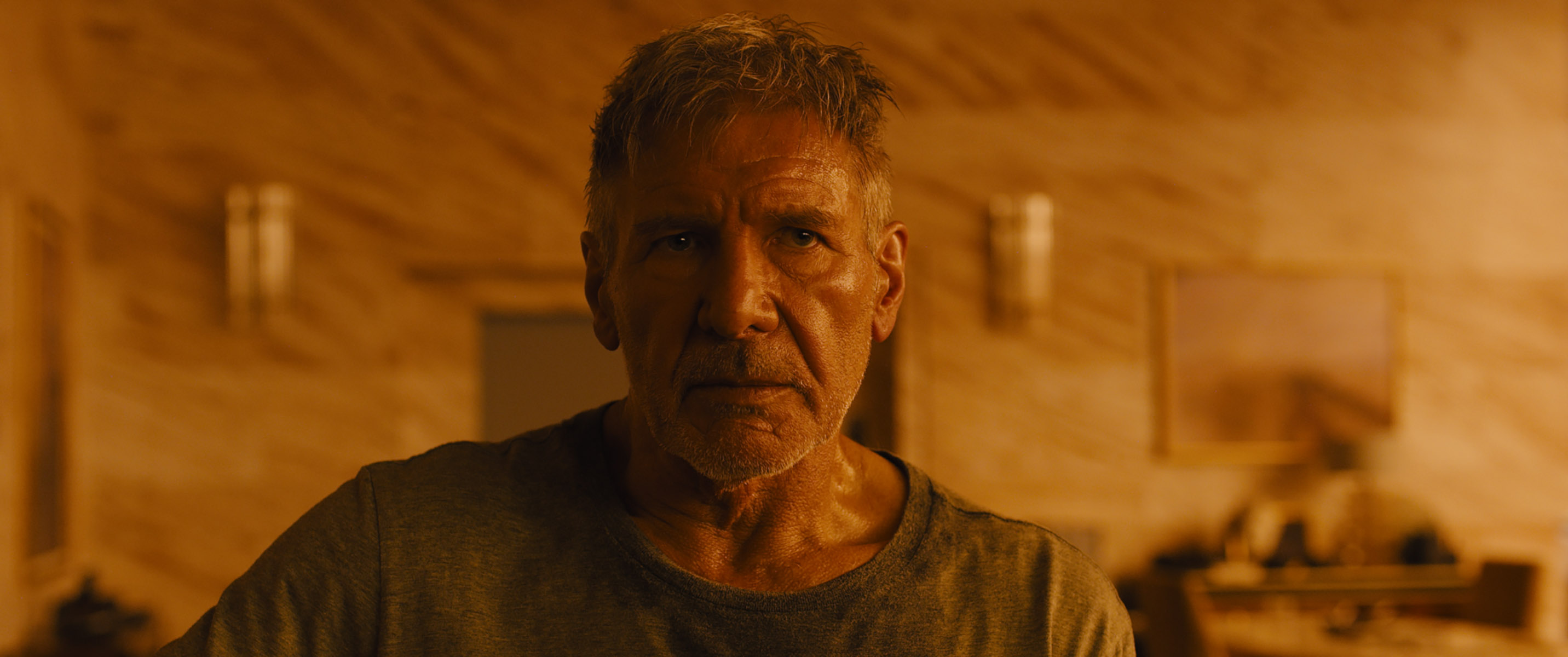
Harrison Ford as Rick Deckard in Blade Runner 2049. Image courtesy Alcon Entertainment.
Blade Runner 2049’s insistence on mimicking and even amplifying the aesthetics of the first Blade Runner, and doing so at such a level of skill and intelligence, is undoubtedly its greatest accomplishment. In this regard, Villeneuve’s canny cine-clone sets itself apart from the clumsier efforts of so many other contemporary revivals of beloved properties, like the disastrously half-baked resurrections of Ghostbusters or Ghost in the Shell. Yet this very strength deeply undermines the film’s own narrative premise. For while there are a smattering of details included to indicate that three decades have passed since the last film—LA’s bedraggled residents now eat protein manufactured from grubs, thanks to an ecological collapse; gargantuan advertising holograms step out from billboards to walk among the rain-spattered crowds—Villeneuve’s precisely engineered cinematic replication flattens distinctions between the two films, making it difficult to sense any passage of historical time. The only part of this fictional world that seems to have aged properly is septuagenarian Harrison Ford, reprising his role as the older blade runner, Rick Deckard.
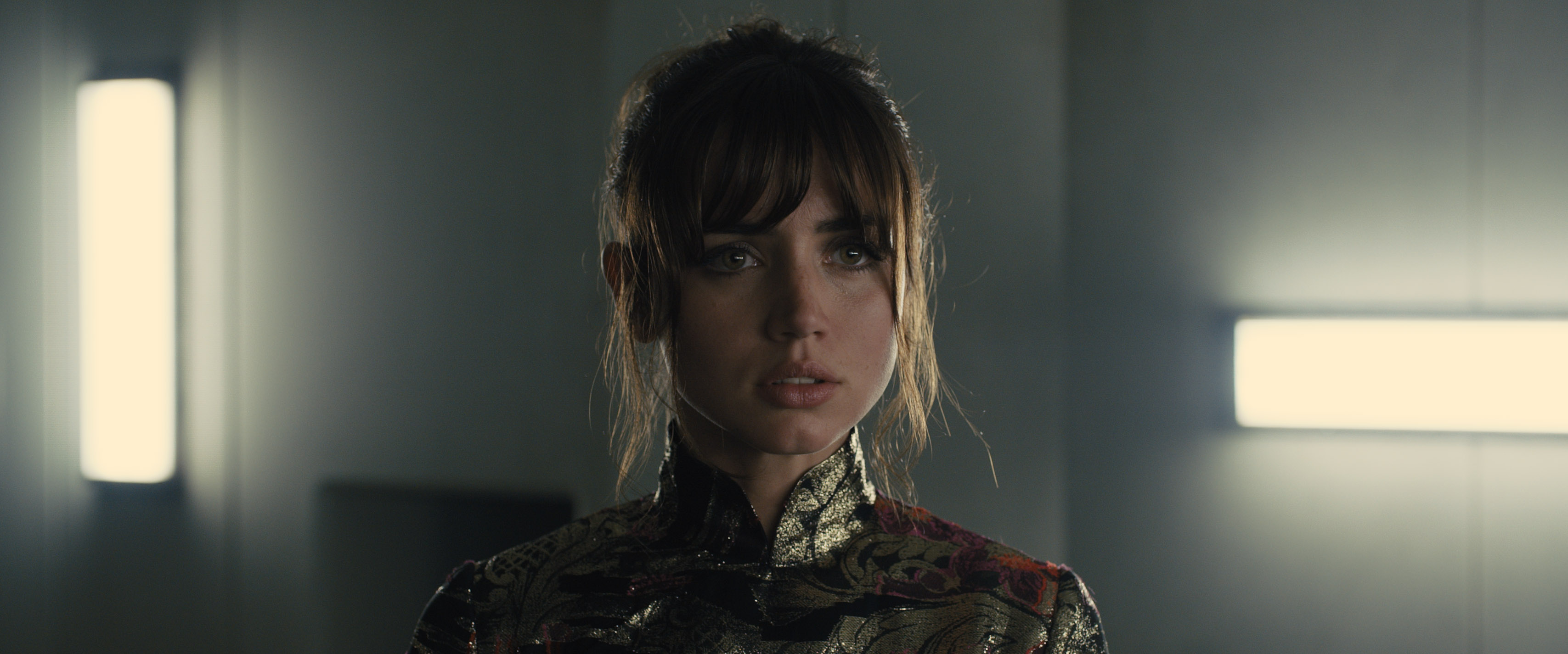
Ana de Armas as Joi in Blade Runner 2049. Image courtesy Alcon Entertainment.
One of Blade Runner 2049’s most visible innovations is Joi (Ana de Armas), K’s stay-at-home significant other. Another product of the Wallace Corporation, Joi is an AI that K has installed in his modest bachelor pad. Inspired by the real-world twenty-first-century phenomena of “virtual girlfriend” apps and digital personal assistants like Alexa and Siri, Joi appears as a life-size hologram of a sexy young woman, who cycles through cute outfits from various twentieth-century decades as she attempts to soothe K after a long, hard day of hunting down replicants. In one of the most visually striking moments in the film, Joi surprises K by hiring him a “real girl” prostitute, Mariette (Mackenzie Davis), for a digitally enhanced threesome. So K can experience a sense of tangible intimacy with his algorithmic lover, K makes out with Mariette while Joi projects herself on top of the sex worker’s body. As the two women caress K in unison, the visual match is imperfect, and what should be an erotic image instead comes to resemble a many-fingered, many-handed monster compellingly crafted from three-dimensional superimpositions.
This uncomfortable integration of impossibly pure wife and all-too-real whore points to Blade Runner 2049’s most egregious failure, which is its retrograde take on gender. In the more repressed 1980s, the inclusion of “standard pleasure model” replicants like Hannah’s character Pris lent an air of new-wave hip, and arguably offered some critique through a decadent brand of sexual realpolitik. In 2017, however, we should expect something more nuanced. Villeneuve seems primarily interested in depicting women as distant objects of erotic fascination and intimate victims of gruesome violence. The only female character who doesn’t fit this mold is K’s hard-nosed boss, Lt. Joshi (Robin Wright), who is tellingly depicted as a dykey ball-buster.
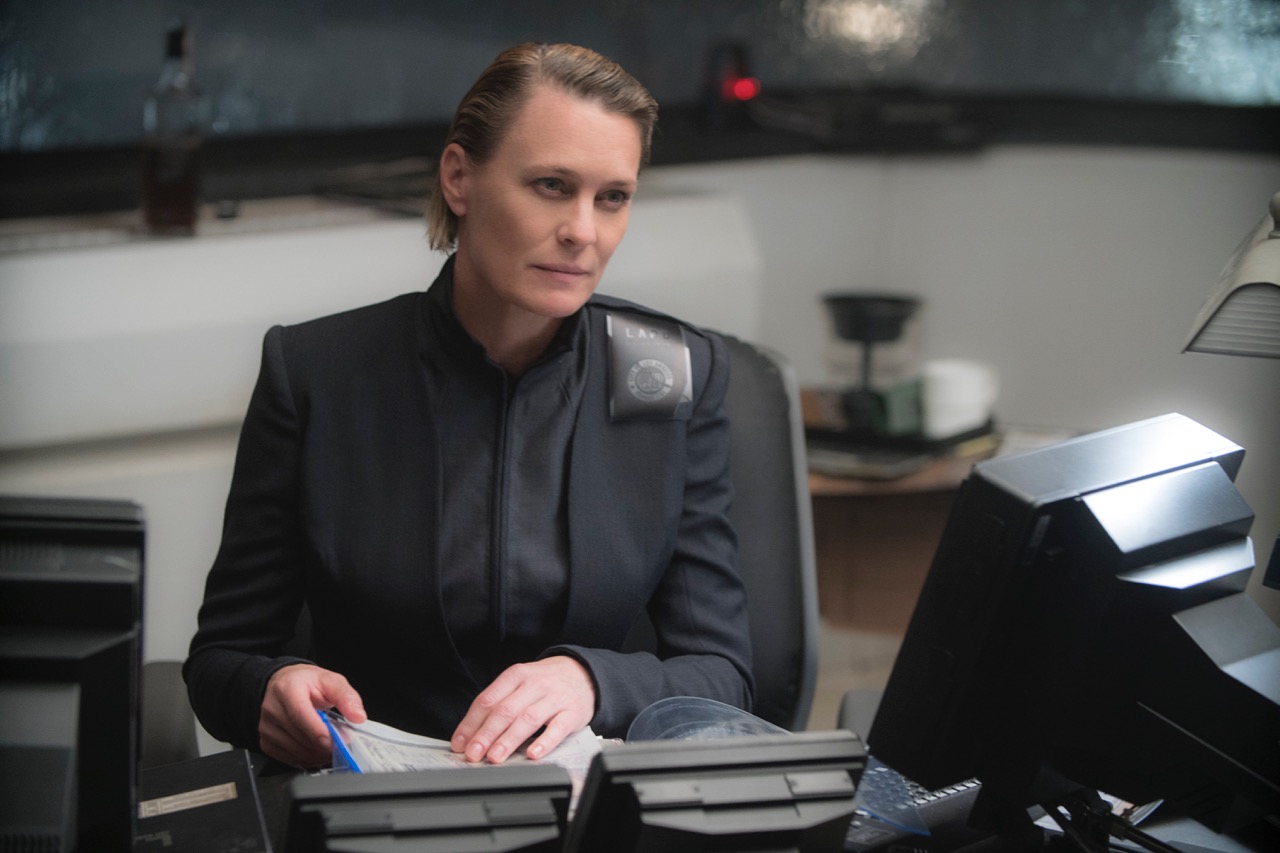
Robin Wright as Lt. Joshi in Blade Runner 2049. Image courtesy Alcon Entertainment.
Blade Runner 2049’s plot eventually hinges on the question of parentage, and this same conundrum haunts Villeneuve’s ambitious revision at its conceptual heart. Much like J.J. Abrams’s equally stiff Star Wars: The Force Awakens (2015), Blade Runner 2049 is so intent on preserving its franchise’s legacy that it fears veering too far from its canonical source. In the end, for all its pleasures, it’s difficult to view Blade Runner 2049 as anything but an elaborate echo of the original, neither true sequel nor reboot, unclear of its own identity.
Ed Halter is a founder and director of Light Industry, a venue for film and electronic art in Brooklyn, New York, and Critic in Residence at Bard College in Annandale-on-Hudson, New York. He is the recipient of the Thoma Foundation 2017 Arts Writing Award in Digital Art for an emerging arts writer, awarded by the Carl & Marilynn Thoma Art Foundation.